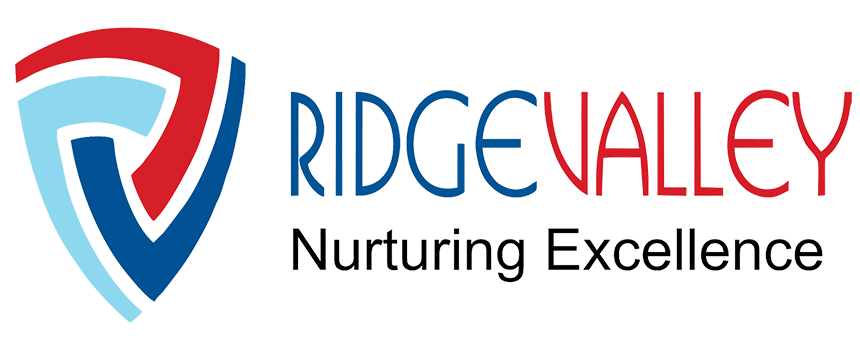Introduction:
Education today is no longer about one-size-fits-all teaching. The modern classroom thrives on diversity — of ideas, talents, and learning styles. At Ridge Valley School, the Best CBSE School in Gurgaon where the focus has shifted from teacher-led instruction to student-centered learning, where every child is encouraged to take ownership of their educational journey.
In this new era of learning, CBSE schools are redefining education through student-centric practices that prioritize curiosity, self-expression, and independent thinking. These institutions understand that nurturing confident, capable learners begins with trust — trust in a child’s ability to explore, question, and grow through experience.
When students become active participants in their learning process, they develop not just academic excellence but also emotional resilience, leadership skills, and a lifelong passion for discovery.
About Us:
Ridge Valley School places the learner at the heart of everything. Our student-centric practices shift the focus from teaching to enabling: personalized learning paths, student-led projects, choice-based assignments and mentorship scaffold each child’s journey toward independence and self-confidence. Beyond the classroom, a rich array of extracurricular clubs—from entrepreneurship to chess, from creative writing to sports leadership—gives students multiple arenas to lead, fail, learn and succeed. Our calendar features student-driven events such as the Inter-School “Shatranj” chess tournament, student-run assemblies and community-engagement drives. Here, confidence emerges naturally when students are trusted, heard and equipped. We believe that tomorrow’s independent thinkers are forged today through experiences that invite them to own their learning, voice their ideas and stand ready for the world.
1. The Philosophy of Student-Centric Education
Student-centric learning is rooted in the belief that every child learns differently — at their own pace, through their own interests, and in their own unique way. Unlike traditional models that prioritize uniformity, this approach tailors education around the learner’s needs, abilities, and motivations.
Teachers act as facilitators rather than instructors. They guide students toward inquiry, problem-solving, and self-reflection. Lessons are designed to be experiential, interactive, and flexible — empowering students to think independently rather than memorize facts.
This model shifts the focus from what is being taught to how it is being learned. It values understanding over repetition and creativity over conformity, ensuring that learning feels both meaningful and personal.
2. Empowering Students Through Choice and Voice
At the heart of student-centric education is choice. When students have a voice in their learning, they develop a sense of ownership and accountability.
Classroom discussions are open and democratic — students are encouraged to express their opinions, debate ideas, and share perspectives. They choose research topics, design projects, and collaborate on solutions to real-world problems.
This sense of autonomy builds intrinsic motivation. Instead of learning to please others, students begin to learn for the joy of discovery. The result is a confident, self-driven learner who is prepared to face challenges independently.
Schools recognized among the CBSE schools consistently practice this approach, ensuring that every learner feels heard, respected, and inspired.
3. Experiential Learning: Learning by Doing
One of the most powerful tools of student-centric education is experiential learning — where students learn through direct experience.
Whether conducting science experiments, organizing cultural events, or developing community projects, students engage in hands-on activities that make concepts tangible. This form of learning connects classroom lessons with the real world, fostering deeper understanding and retention.
Experiential learning helps children move beyond passive observation to active participation. They learn how to plan, execute, analyze, and reflect — developing skills essential for independent thought and problem-solving.
When students apply knowledge in practical contexts, learning becomes a living experience rather than an academic exercise.
4. Teachers as Mentors, Not Just Instructors
The role of a teacher in a student-centered environment extends far beyond delivering lessons. Teachers act as mentors — guiding students to discover knowledge for themselves.
They create personalized learning plans, adapt strategies based on student feedback, and encourage curiosity through questions rather than answers. Mentorship also includes emotional guidance — helping children navigate self-doubt, stress, and peer relationships.
Regular one-on-one interactions ensure that teachers understand each child’s strengths, challenges, and aspirations. This personal connection builds trust, confidence, and motivation — transforming learning into a collaborative journey.
Such teacher-student relationships are a cornerstone of the philosophy practiced in many of the CBSE schools, where academic excellence and emotional growth go hand in hand.
5. Fostering Critical and Creative Thinking
Student-centric learning emphasizes the process of thinking — not just the product. Children are taught to question, reason, and evaluate rather than memorize and reproduce.
Classroom activities often revolve around inquiry-based projects, case studies, and debates. Students explore multiple perspectives, analyze evidence, and arrive at their own conclusions.
Creative thinking is equally prioritized. Through art, music, drama, and design thinking workshops, students learn to express ideas freely and approach challenges innovatively.
When critical and creative thinking combine, students become resourceful problem-solvers — ready to adapt to complex situations both in academics and in life.
6. Encouraging Collaboration and Team Learning
While independence is vital, collaboration strengthens it. Student-centered classrooms encourage group work where learners exchange ideas, delegate responsibilities, and appreciate different viewpoints.
Collaborative learning builds communication, empathy, and teamwork — skills essential for the 21st century. Group projects and discussions create a space where children learn to listen, compromise, and contribute.
Such experiences teach that leadership isn’t about dominance but about cooperation and respect.
Forward-thinking schools integrate collaboration deeply into their pedagogy — allowing students to experience leadership through shared success rather than competition.
7. Personalization: Recognizing Every Learner’s Journey
No two learners are the same, and student-centric education acknowledges that difference. Through diagnostic assessments, progress tracking, and feedback loops, educators design personalized learning paths that suit each child’s pace and potential.
Advanced learners are challenged with extension projects, while others receive additional support and reinforcement. Technology also plays a vital role — adaptive learning platforms, digital resources, and AI-based tools customize instruction to meet diverse needs.
This level of personalization ensures that every student experiences success, which in turn builds confidence and a positive attitude toward learning.
8. Integrating Technology for Empowered Learning
Technology, when used meaningfully, can greatly enhance student-centered practices. Smart classrooms, digital storytelling, and interactive simulations make learning more engaging and accessible.
Virtual labs, e-learning modules, and coding programs enable students to experiment, explore, and create at their own pace. Moreover, digital platforms promote self-directed learning — allowing students to research topics of interest, collaborate virtually, and reflect through digital portfolios.
However, the goal isn’t to replace human connection with screens, but to use technology as a tool that empowers independent inquiry and creativity. Schools that use this balance effectively have positioned themselves among the CBSE schools for delivering future-ready education.
9. Emotional Intelligence: The Hidden Strength of Independence
Confidence grows best in emotionally supportive environments. Student-centric education prioritizes emotional intelligence — helping students understand their feelings, develop empathy, and manage challenges with composure.
Mindfulness sessions, counseling programs, and reflective activities help children connect with their inner selves. They learn to identify strengths, handle stress, and communicate positively.
Emotional awareness empowers students to build meaningful relationships and handle both success and setbacks with grace — qualities that are essential for lifelong confidence.
10. Building Resilience Through Reflection
Reflection is an integral part of student-centered learning. After completing a project or activity, students discuss what worked, what didn’t, and how they can improve.
This process develops self-awareness and resilience. Instead of fearing mistakes, students view them as opportunities for growth. They learn persistence, adaptability, and problem-solving — traits that define strong, independent thinkers.
By creating a culture where effort is valued as much as achievement, schools encourage students to embrace learning as a journey rather than a race.
11. Leadership Through Participation
Leadership isn’t taught through textbooks — it’s cultivated through experience. Student councils, house systems, and school clubs provide opportunities for learners to lead initiatives, plan events, and represent their peers.
These experiences help children build communication, accountability, and decision-making skills. They learn that leadership is not about authority, but about teamwork, empathy, and responsibility.
This real-world leadership training empowers students to take initiative confidently — both in school and beyond.
12. Co-Curricular Activities: Extending Learning Beyond Classrooms
True independence and confidence develop when children are encouraged to explore their interests. Co-curricular programs — from sports and music to debate, art, and robotics — form a vital part of student-centered education.
Such activities offer opportunities to experiment, fail, and succeed — all while discovering new passions. Sports teach perseverance and teamwork, performing arts enhance expression, and competitions build courage and discipline.
These experiences help children recognize that success has many forms — academic, creative, social, and emotional.
13. Parent Involvement: Strengthening the Support System
Education thrives when schools and parents work together. Student-centric schools maintain open communication with families through regular updates, workshops, and engagement sessions.
Parents are encouraged to understand learning goals, celebrate progress, and reinforce confidence at home. This partnership builds consistency — students receive the same encouragement and guidance across both environments.
Such collaboration helps children see learning as a community effort, where their growth is supported by everyone around them.
14. Creating a Safe and Nurturing Learning Space
For students to become independent and confident, they must first feel safe — physically, emotionally, and socially. Schools focused on student well-being ensure secure campuses, inclusive classrooms, and zero-tolerance policies toward bullying.
Wellness programs, peer support groups, and empathy-driven initiatives create a culture of kindness. When students feel respected and valued, they naturally develop the confidence to take risks, voice opinions, and grow without fear.
15. Assessment That Encourages Growth, Not Pressure
Traditional exams often emphasize memorization and rank-based performance. Student-centric education adopts continuous, formative assessment — focusing on progress and understanding.
Projects, presentations, and peer reviews help teachers measure learning holistically. Constructive feedback replaces marks as the main motivator, encouraging students to learn for mastery rather than competition.
This stress-free approach fosters curiosity and self-improvement — vital for developing lifelong learners who take responsibility for their growth.
16. Lifelong Learning: The Ultimate Goal
The greatest success of student-centered education lies in its ability to inspire lifelong learners. When students learn to question, explore, and reflect independently, education becomes a habit — not an obligation.
They carry these qualities into adulthood — becoming thoughtful professionals, empathetic citizens, and confident individuals. The skills gained through student-centric practices — adaptability, problem-solving, and resilience — are precisely what the modern world values most.
In fostering these attributes, the CBSE schools are setting benchmarks for education that’s future-ready, purposeful, and deeply human.
Conclusion:
Student-centric education is more than a teaching strategy — it’s a philosophy that transforms how children see themselves and the world. At Ridge Valley School, the Top CBSE Schools in Gurgaon where by putting learners at the center of every decision, schools create environments where curiosity thrives, confidence grows, and independence blossoms.
When students are trusted with responsibility, encouraged to explore, and guided with empathy, they evolve into thinkers and leaders who embrace challenges fearlessly.
In the journey of education, the most powerful lessons aren’t taught — they are experienced. And through these experiences, the next generation of independent, confident, and compassionate minds is being shaped every single day.
FAQs:
Q. 1 What are student-centric practices in education?
Ans : Methods that place learners’ interests, pace, and goals at the core of teaching.
Q. 2 How do these practices build independent learners?
Ans : They encourage self-assessment, reflection, and responsibility for learning.
Q. 3 Why is confidence vital in student development?
Ans : Confidence empowers learners to express ideas and face challenges boldly.
Q. 4 How does collaboration support independent thinking?
Ans : It exposes students to diverse perspectives, refining their analytical skills.
Q. 5 What’s the teacher’s role in student-centric learning?
Ans : Teachers guide discovery and foster curiosity instead of dictating answers.
Q. 6 How do top CBSE schools implement these practices successfully?
Ans :By combining innovation, empathy, and active learning for holistic growth.










